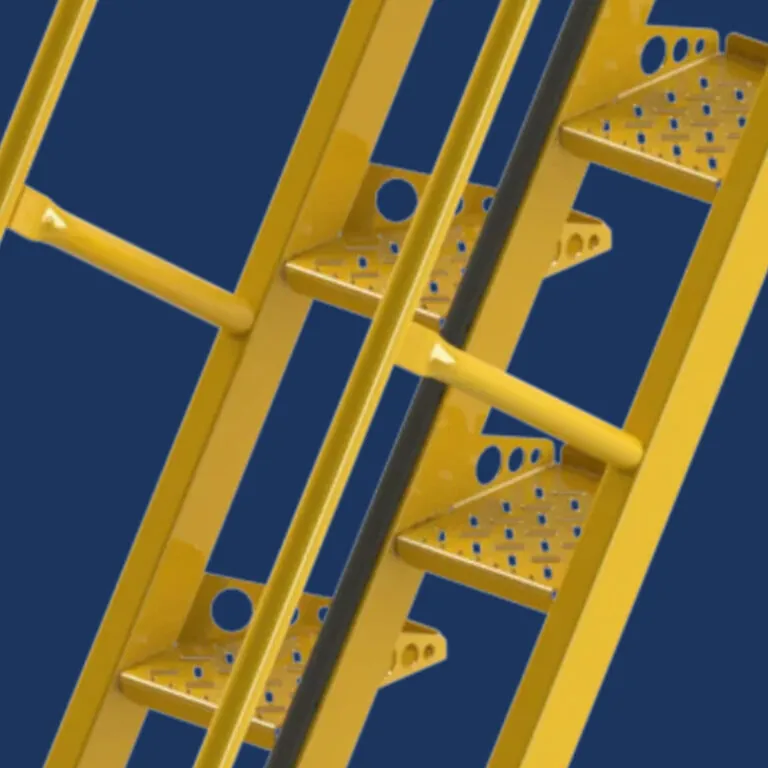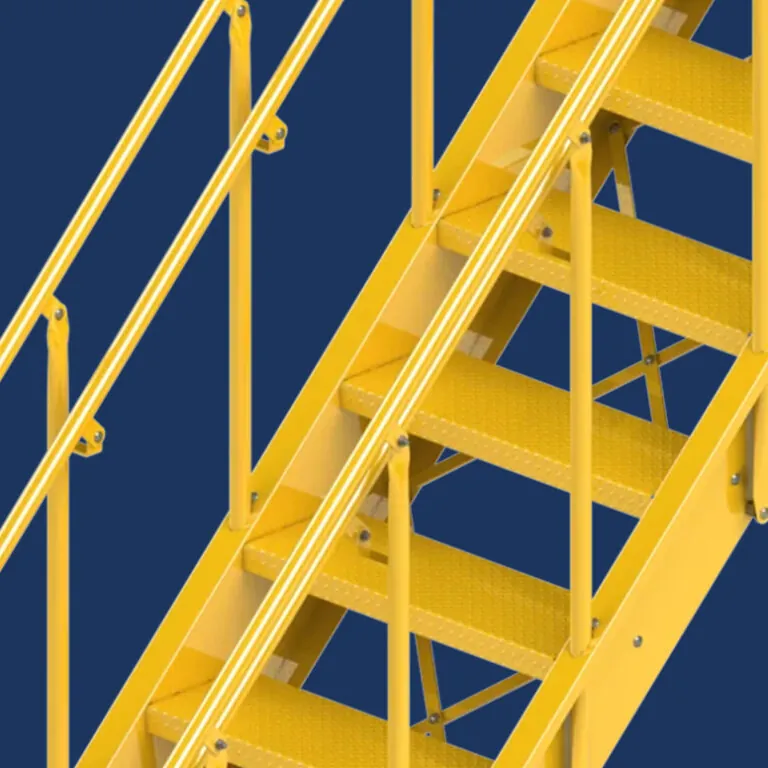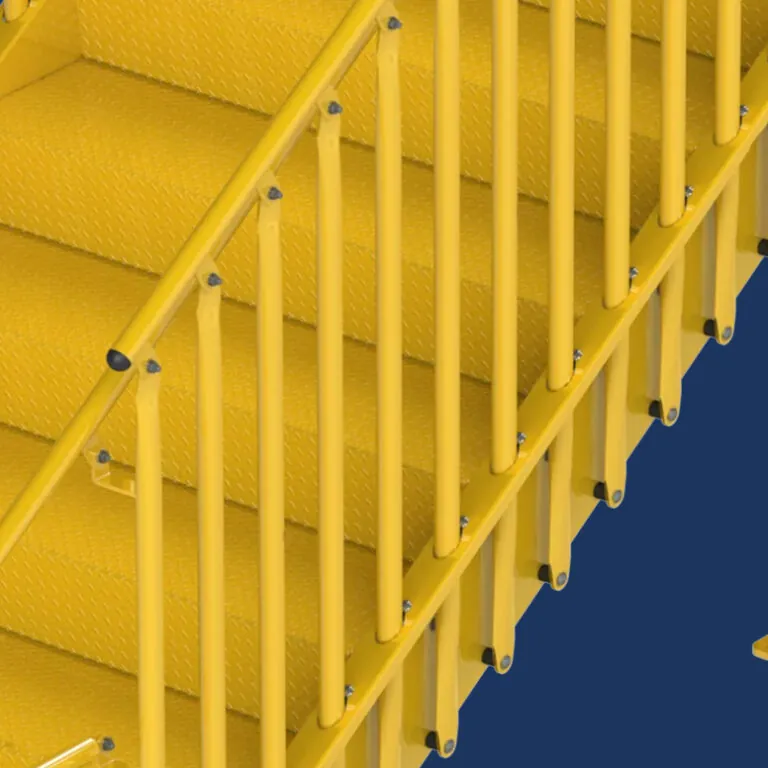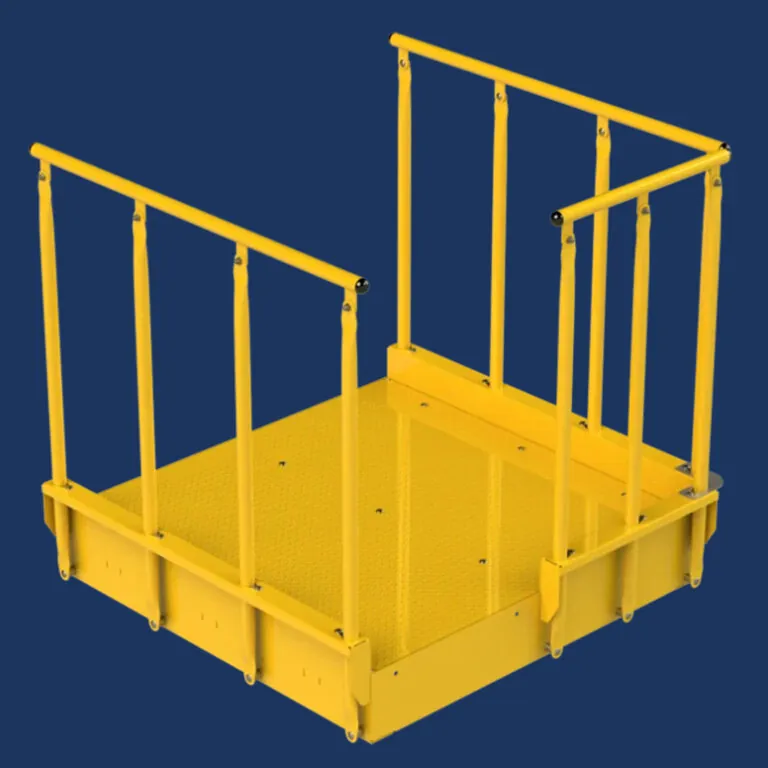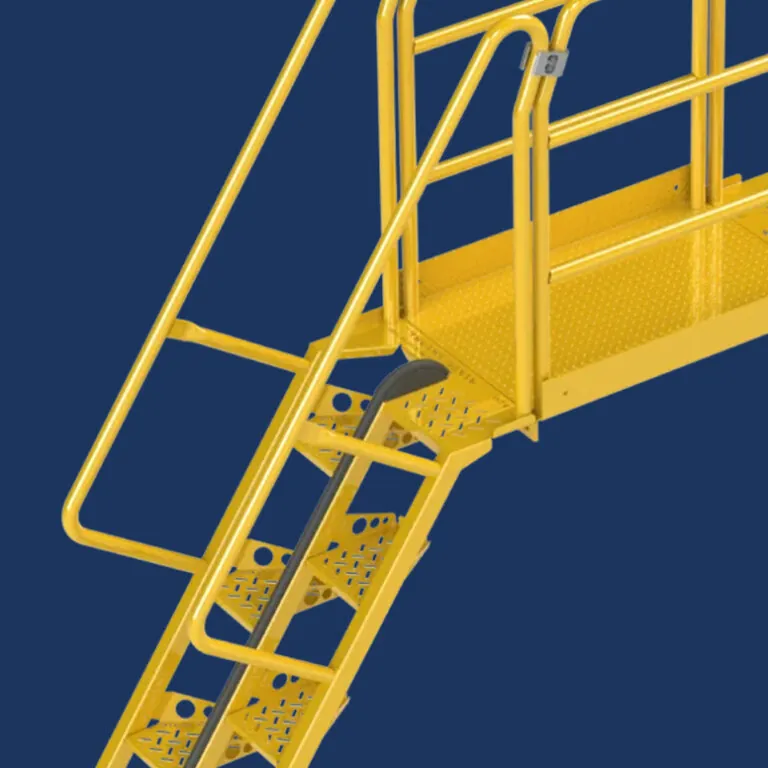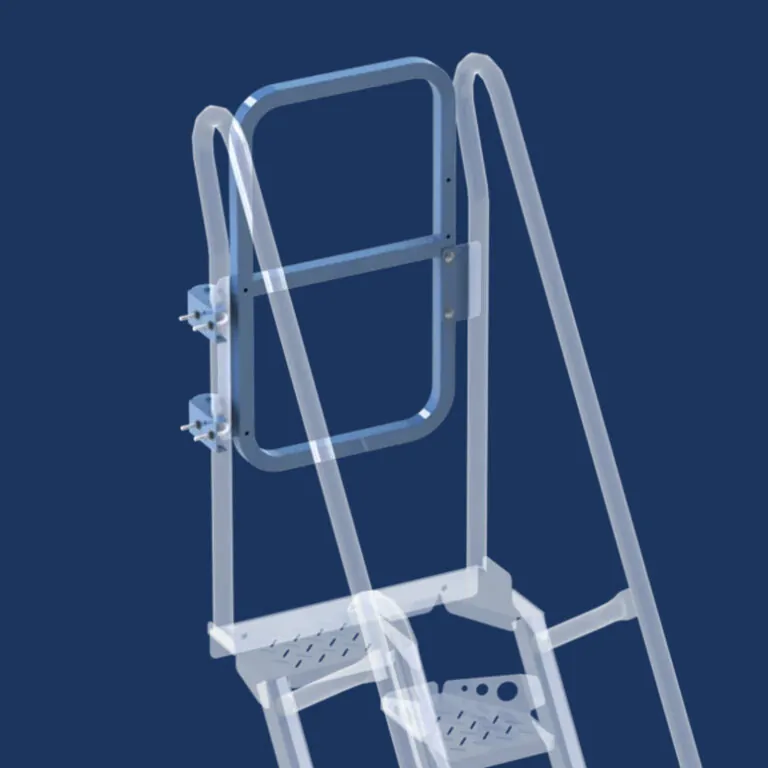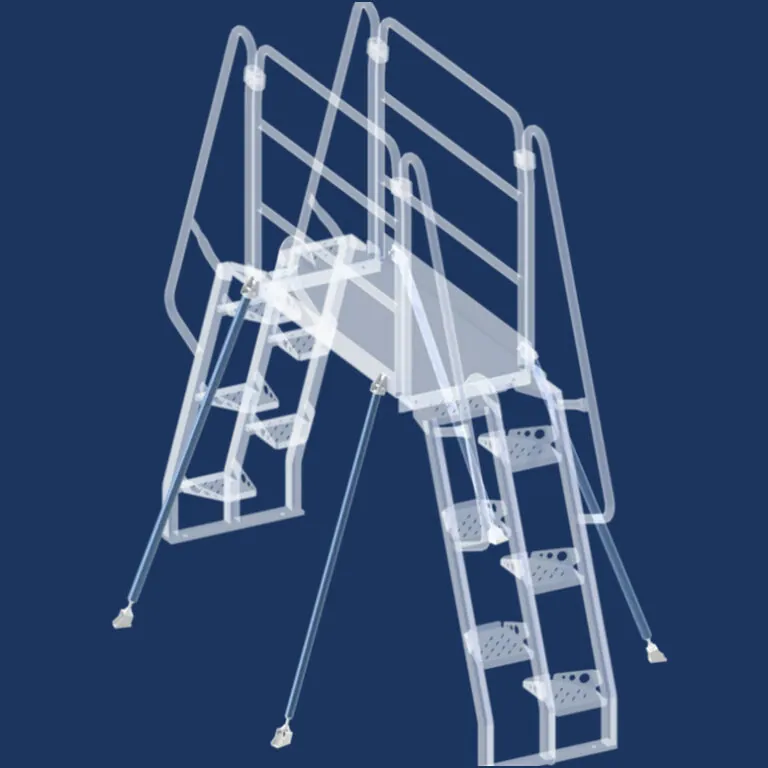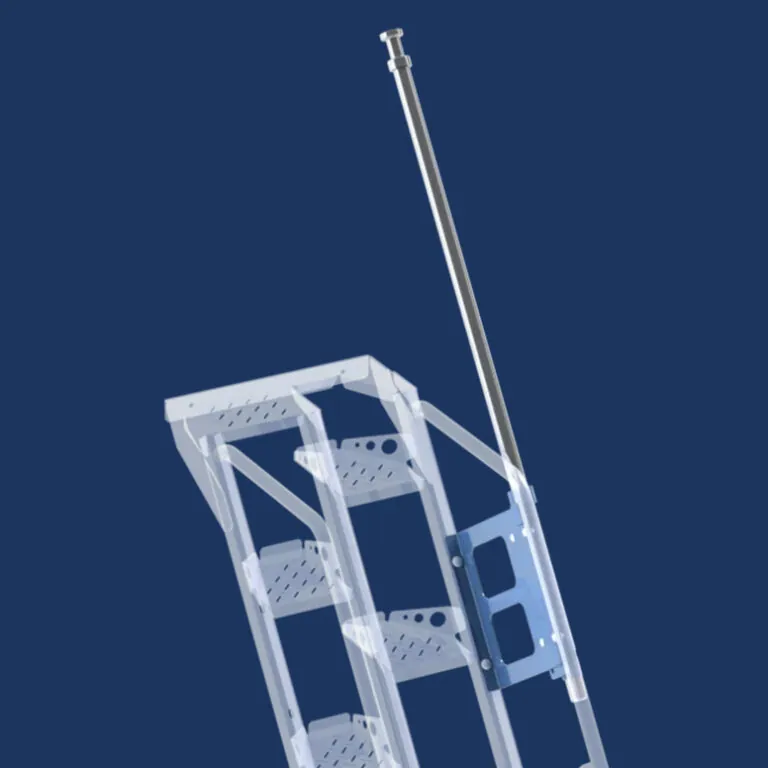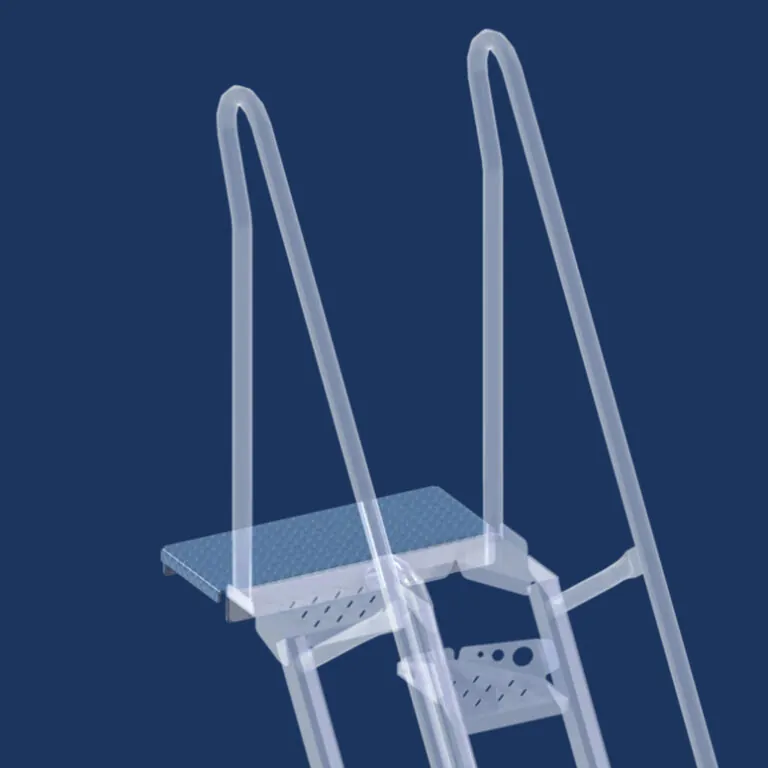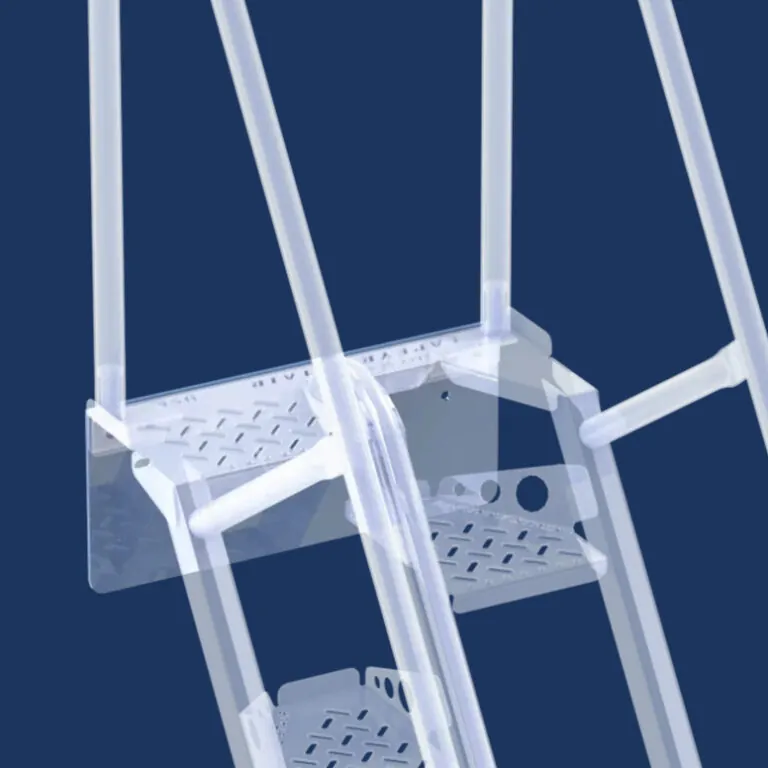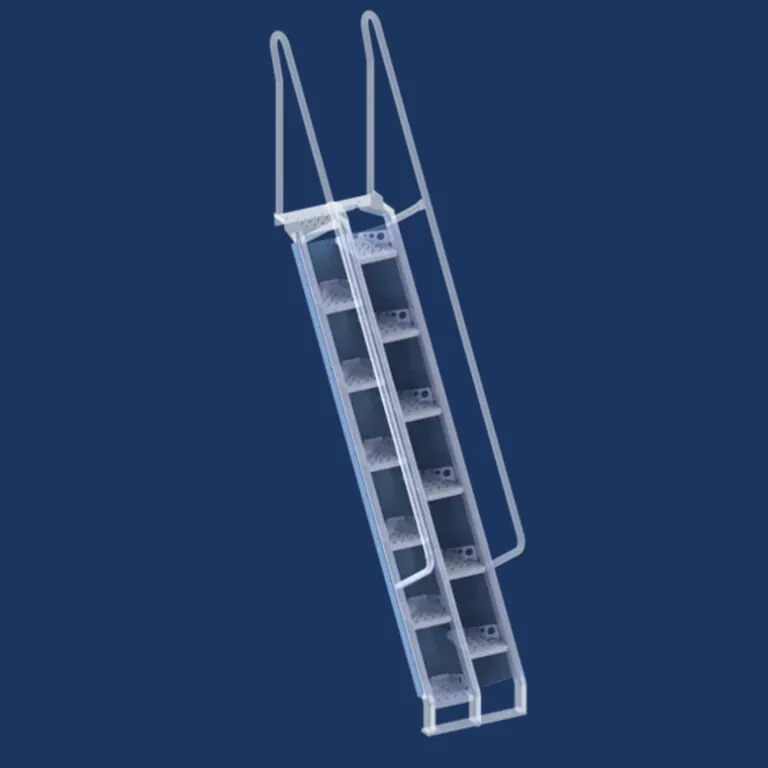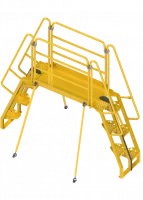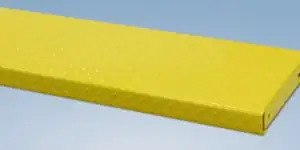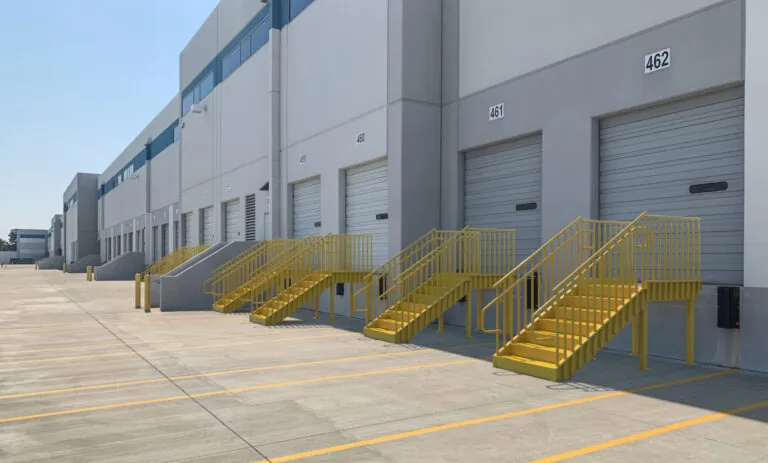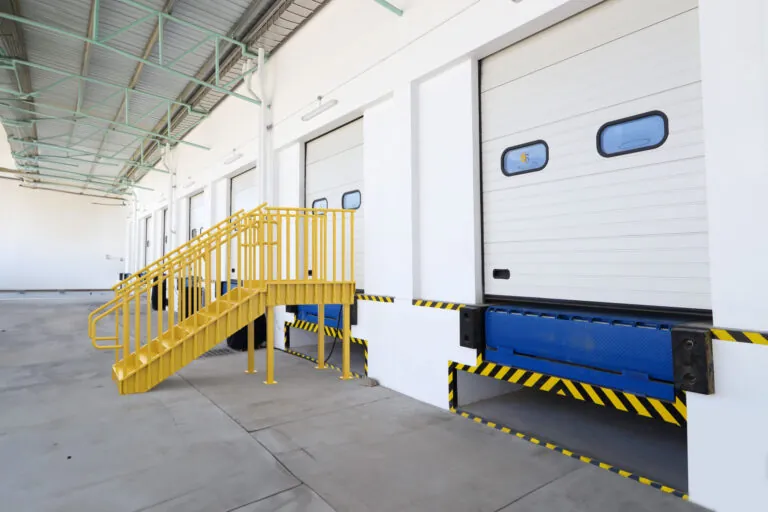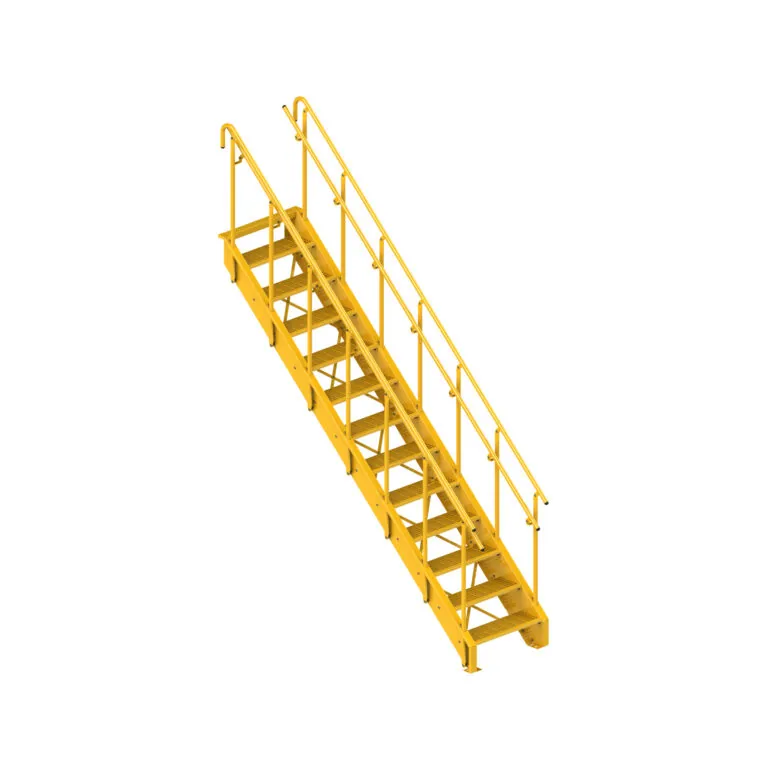Slippery walking surfaces are associated with fall incidences in the workplace. Non slip metal stair treads improve safety by eliminating slippery conditions.
Abrasive coatings over metal treads provide a durable, permanent, slip resistant walking surface. Serrated grating treads and other grip treads are also good for certain applications. Metal treads are a great alternative to concrete stair treads. This guide will teach you about slip-resistant metal stair treads for industrial and commercial stairs.
- Standards for non-slip walking surfaces
- Measuring slip resistance
- Benchmark standards for slip resistance
- Slip resistance of metal stair treads
- Applications for commercial and industrial non slip metal stair treads
Slip resistance standards
Understanding the standards for non-slip walking surfaces is no easy task. The chart below the codes and standards that address non-slip walking surfaces.
Stair Code / Standard |
Requirements |
| International Building Code (IBC) Section 1003.4 Slip resistant surfaces |
Circulation path of the means of egress shall have a slip-resistant surface and be securely attached. |
| Occupational Safety and Health Administration (OSHA) Section 1910.22 |
Walking-working surfaces are maintained free of hazards such as sharp or protruding objects, loose boards, corrosion, leaks, spills, snow, and ice. §1910.22(a)(3)
Walking-working surfaces are inspected, regularly and as necessary, and maintained in a safe condition. §1910.22(d)(1) |
| National Fire Protection Association (NFPA) 101 Chapter 7: Means of Egress |
Slip Resistance: Walking surfaces in the means of egress shall be slip resistant under foreseeable conditions. §7.1.6.4 |
| Americans with Disabilities Act (ADA) Chapter 3: Floor and Ground Sur |
Firmness, Stability, and Slip Resistance: Accessible floor and ground surfaces must be stable, firm, and slip resistant. §302.1 |
| Mine Safety and Health Administration (MSHA) Subpart J: Travelways |
Inclined walkways along conveyors shall be nonskid or provided with cleats |
| ASTM International F1637 Standard Practice for Safe Walking Surfaces Section 5.1.3 |
Walkway surfaces shall be slip resistant under expected environmental conditions and use. Painted walkways shall contain an abrasive additive, cross cut grooving, texturing or other appropriate means to render the surface slip resistant where wet conditions may be reasonably foreseeable. §S5.1.3 |
The codes and standards specify different requirements for stairway walking surfaces.
- IBC, NFPA, and ADA require stairways to be “slip resistant.”
- MSHA requires a “nonskid” surface.
- OSHA requires walking-surfaces to be “hazard free” or “maintained in a “generally safe condition.”
Unfortunately the codes do not do a great job of defining these terms. The codes leave it up to the employer or building designer to determine how to meet the requirements. To do so, employers and designers need to understand how slip resistance is tested and measured.
Measuring slip resistance
There are different units of measure for slip resistance of walking surfaces depending on the test being used to measure slip resistance.
| Tread type / description | DRY Minimum: COF 0.5 / PTV 35 |
WET Minimum: COF 0.42 / PTV 45 |
|
| Diamond Plate Tread Metal stair tread with raised bumps to create additional friction |
COF 0.6 | COF 0.54 | |
| Lapeyre Stair Quiet Grip™ Tread Bolt-on metal tread cover with an abrasive, permanent polyurethane coating |
PTV 62 | COF 0.68 / PTV 47 | |
| Lapeyre Stair Fast Grip™ Tread Metal tread with an abrasive, epoxy coating |
COF 0.92 | COF 0.76 | |
| Bar Grate Tread Welded bar grate panels with raised bumps on top of bars to create additional friction |
COF 0.66 | ||
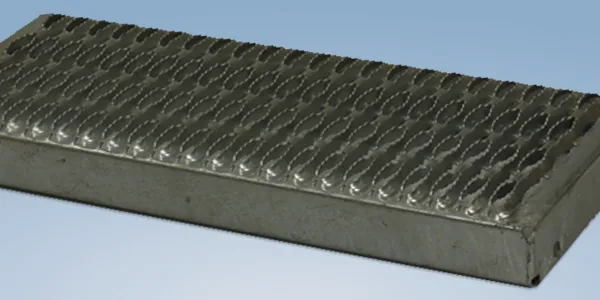 |
Grip Tread Formed metal treads with raised, serrated surface to create friction |
COF 1.19 | COF 1.08 |
- The coefficient of friction (COF) is the most recognized standard unit for measuring resistance between two objects. The coefficient of friction (COF) describes the ratio of the force of friction between two bodies and the force pressing them together. The COF measurement is dependent on the testing process for obtaining the measurement. Different tests may yield different COF for the same surface.
- The Pendulum Test Value (PTV) or Slip Resistance Value (SRV) is a unit of measurement derived from the AS HB198:2014 (AS/NZS 4586) Pendulum Test, an Australian code standard for measuring slip resistance. The PTV is derived using a pendulum test to measure slip resistance.
To measure COF and PTV, there are two common testing methods.
- The ANSI A137.1/A326.3 Dynamic Coefficient of Friction (DCOF) Test is a widely adopted method of testing the dynamic coefficient of friction. This test uses a device called the BOT3000E Slip Tester to measure the COF.
- Another widely adopted standard worldwide is the AS HB198:2014 (AS/NZS 4586) Pendulum Test, an Australian code standard for determining the Pendulum Test Value (PTV).
The ANSI A137.1 test was previously adopted under “Section 2103.6 Ceramic Tile” of the 2012 International Building Code. The requirement was removed in the 2015 IBC edition. The Pendulum test is the national standard test device for pedestrian slip resistance in 49 nations on five continents and has been endorsed by Ceramic Tile Institute of America since 2001.
Standard Benchmarks for Slip Resistance of a Walking Surface
Are there benchmark values for the COF or PTV for adequate slip resistance of a walking surface?
OSHA previously included a nonmandatory appendix (Appendix A to Subpart D) that recommended a static COF of 0.5. OSHA removed any reference to slip resistance in the 2017 Update to Walking-Surfaces under the belief that the current language in Section 1910.22 already addresses slip hazards.
ANSI A137.1 states that “Unless otherwise specified, tiles suitable for level interior spaces expected to be walked upon wet shall have a wet dynamic COF of 0.42 or greater…”
The Ceramic Tile Institute of America (CTIOA) says that a minimum pendulum test value of 36 for level floors is considered “low slip potential”. AS HB 198: 2014 recommends a range of situation-specific minimum Pendulum Test Values depending on the application. For stair treads, it recommends a minimum of 35 for dry conditions and 45 for wet conditions.
Slip resistance of non slip metal stair treads
There are many options for slip resistant stair treads. We break down the options for industrial and commercial non slip stair treads in the chart below.
Applications for non slip metal stair treads
Non slip metal stair treads can be applied in both industrial and commercial applications.
| Tread type | Applications | |
| Diamond plate stair tread | Dry, low traffic areas. Not a very slip resistant surface; not ideal for wet conditions.
Examples: |
|
| Lapeyre Stair Quiet Grip™ Tread |
Dry or wet industrial applications which need higher slip resistance. Commercial applications where noise control is a concern. Commercial egress stairs as an alternative to metal pan stairs. Examples:
|
|
| Lapeyre Stair Fast Grip™ Tread | Commercial egress stairs where noise control is not a concern. | |
| Bar grate tread | Wet, exterior environments. | 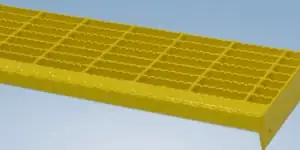 |
| Grip tread | Outdoor environments and areas exposed to oil, grease or other slippery solutions. |
Lapeyre Stair offers the diamond tread, Quiet Grip tread, bar grating, and grip tread systems for our bolted, metal stair product line, including our standard crossover stairs. All of the tread systems above can be applied for our commercial steel stair product line. We also offer the abrasive Quiet Grip tread coating for our alternating tread stairs for applications that require additional slip resistance.

